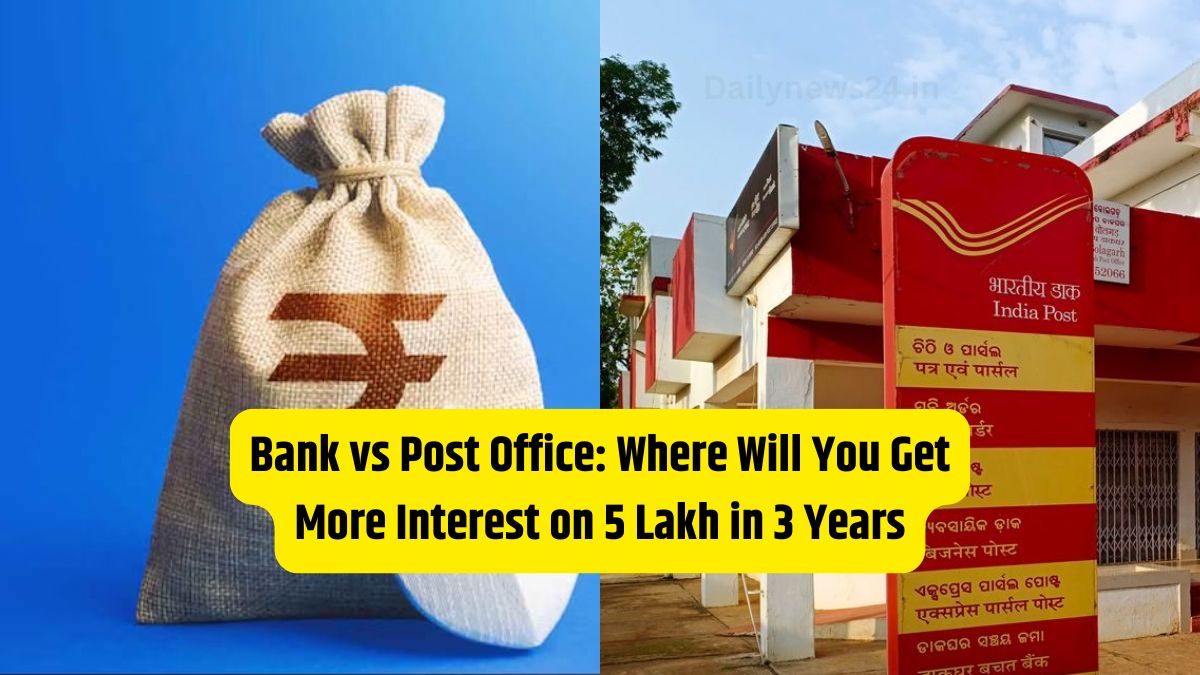Post Office Vs Bank FD : If you want to save money for the future and are looking for a safe investment option, then FD (fixed deposit) can be a good option. Your money is safe in an FD, and you get returns according to the fixed interest. Especially if you are looking for a low-risk investment, then FD is a great way.
Recently, RBI has cut the repo rate, due to which banks have started reducing the interest rates of FDs. On the other hand, the government has not made any change in the interest rates of post office time deposits. Now the question arises: which investment option is better, Post Office Vs Bank FD? Let’s understand this.
What is the Post Office Time Deposit Scheme?
The Post Office Time Deposit Scheme is like a bank FD. In this you can invest for 1 year, 2 years, 3 years, and 5 years. Currently, you are getting 6.9% to 7.5% interest on this scheme of the post office. Now, if we talk about 3-year FDs, currently, 7.10% interest is being given at the post office. This interest rate is for the April to June quarter.

Change in bank FD interest rates
After the repo rate cut, banks have reduced the interest rates of FDs. Still, the interest rate of some private banks is higher than the post office.
- DCB Bank, RBL Bank, and Yes Bank (Post Office Vs Bank FD) are giving 7.50% interest on 3-year FDs.
- This interest rate is 7.25% at Bandhan Bank and IndusInd Bank.
- Canara Bank is giving 7.20% interest.
- Bank of Baroda is also giving 7.15% interest.
At the same time, some big government banks like SBI, Union Bank, PNB, and Indian Bank are offering interest ranging from 6.25% to 6.75% on 3-year FDs.
Axis Bank, HDFC Bank, ICICI Bank, and Kotak Mahindra Bank are offering an interest rate of 6.90% to general customers, which is 0.20% less than the rate of post office time deposit.
Return on investing in post office time deposit
If you invest ₹500,000 in a post office time deposit (Post Office Vs Bank FD) at an interest rate of 7.10%, then your maturity amount will be ₹617,538. This means that you will get interest of ₹117,538 in 3 years.
Returns on investing in banks FD
Now, if you invest ₹500,000 in a 3-year FD in a big bank at an interest rate of 6.90%, then your maturity amount will be ₹614,598. That is, you will get a return of ₹114,598 in 3 years.

Conclusion
So, if we compare the two, you are getting slightly higher interest in post office time deposits. But if you invest in a private bank FD, then you can get better returns than post office.
Still, you have to decide what your financial situation and goals are. Both investment options are safe, but if you want higher returns in terms of interest rate, then a bank FD (Post Office Vs Bank FD) can be a good option.
So, while choosing the right option from both post office time deposit and bank FD, keep in mind your needs and financial situation.
Read More
Start Saving ₹45 a Day and Create ₹25 Lakhs with LIC Jeevan Anand Policy
SBI PPF Scheme: Save ₹750 Every Month and Get ₹2.44 Lakh in Return, Know How
SIP: It Is Easy To Make 5 Crores By Saving 100 Rupees Every Day, Just Follow This Method
























